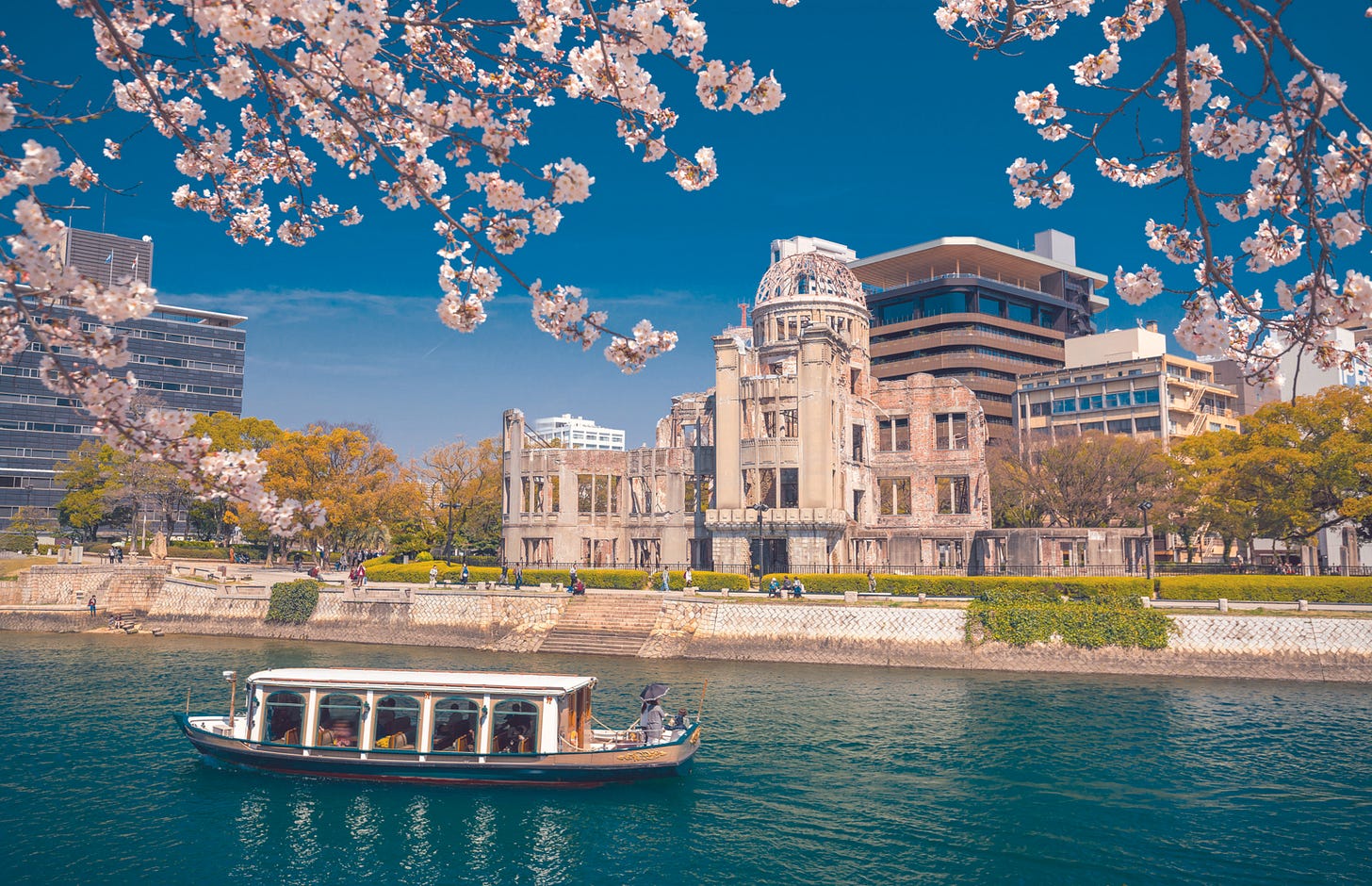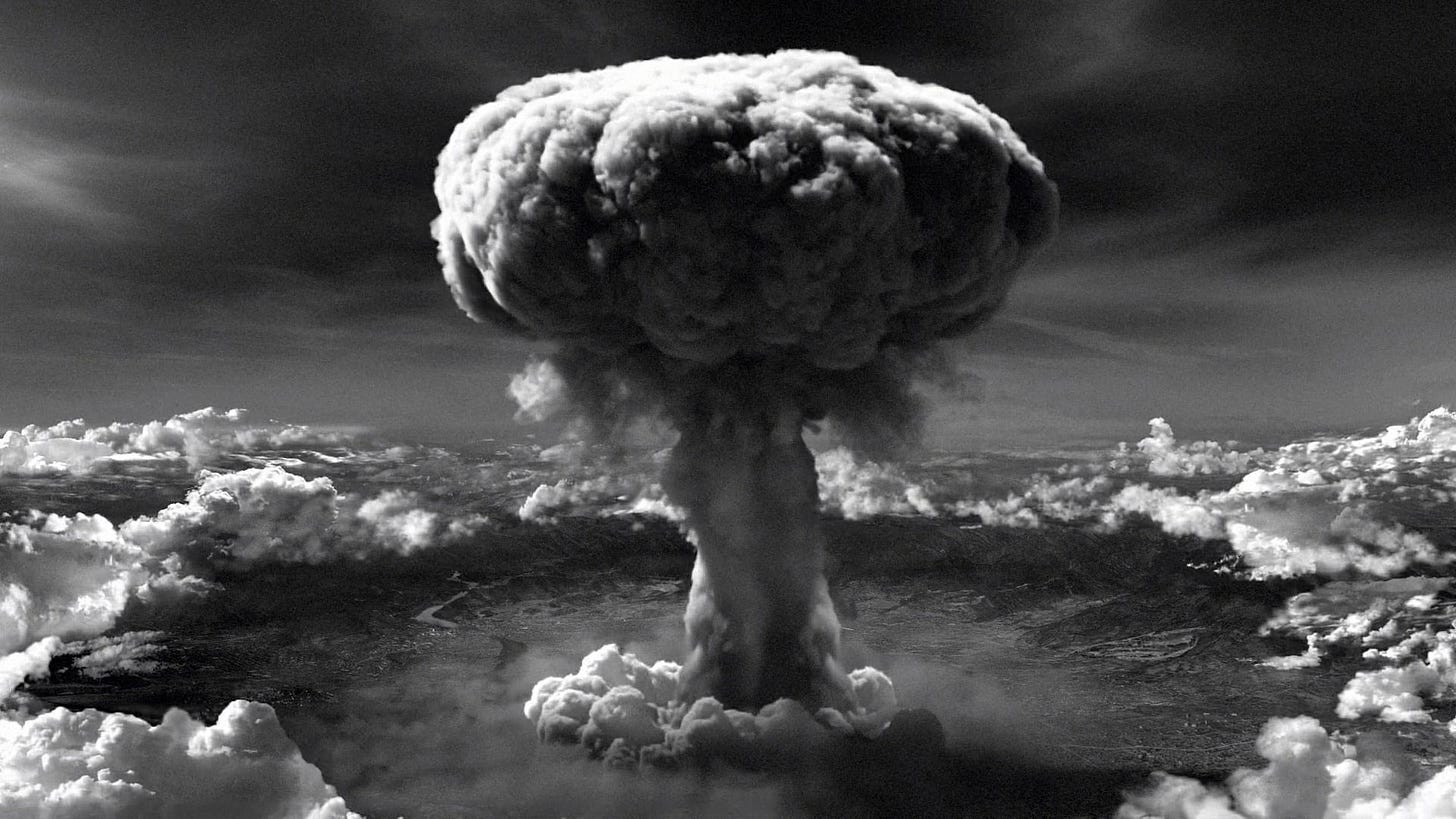"The sun had fallen to earth."
80 years ago, America dropped an atom bomb on Hiroshima. Never forget.
PolitiSage is dedicated to bringing you well-researched, clearly-written deep dives into issues of current and historical significance. If our contributions illumine your understanding of the world, we hope you’ll consider supporting our work by becoming a paid subscriber. We are entirely reader-supported.
In Nature this morning, Mordecai Sheftall interviews one of the now-aged survivors of the first human experience of an atomic weapon. Sheftall writes:
On 6 August 1945, the United States dropped an atomic bomb on the Japanese city of Hiroshima, killing 80,000 people in a single day, and tens of thousands more in the subsequent months. “If there is a hell,” survivor Ōiwa Kōhei recalled thinking of the aftermath, “it must be just like this.” Kōhei, 13-years-old at the time, was plagued for months by radiation poisoning, and forever by the psychological trauma. The hibakusha — the Japanese term for atomic-bomb survivors — “will not be with us for much longer, so it is essential that their irreplaceable living testimony should continue to be diligently and accurately recorded while it is still available”, writes historian Mordecai Sheftall. Their testimony must be preserved not for historical record, but so that current and future generations will take the lessons of their experiences to heart, says Sheftall.
Those who watched the brilliant movie Oppenheimer will know of the extreme political jockeying that went into Truman’s decision to drop bombs on Hiroshima and Nagasaki. Convinced the Japanese would defend their islands to the last man, woman and child, estimated Allied casualties that would result from an invasion topped out at a million dead, many of them Americans. So, despite the last-ditch efforts by Szilard to prevent the use of the bomb, fearing irreparable damage to geopolitical safety, Truman went ahead. And on August 6, 1945, the Enola Gay dropped “Little Boy” on Hiroshima. It detonated 1,800 feet above the ground. Writes Sheftall:
This fireball assailed the crowded wooden city below with two vectors of immediate destruction. The faster of these was a burst of radiation across the electromagnetic spectrum — γ rays, X-rays, ultraviolet light, visible light and thermal rays — that reached the city at the speed of light, baking every surface it touched to temperatures ranging from 3,000 to 4,000 °C for up to eight seconds. In a combustion zone with a radius of about 1.5 kilometres from Little Boy’s hypocentre, every bit of organic matter directly exposed to this heat (twice the melting point of steel) immediately burst into flames.
A second bomb—”Fat Man”—was dropped on Nagasaki on August 9th. Then Japan surrendered.
Counting dead is mind-bending. In Hiroshima, 80,000 people were dead by sundown on August 6th, and 60,000 more died of the third vector—acute radiation syndrome—within a few months. In Nagasaki, another 74,000 died within the same time frame.
Eighty years on, historians like Sheftall are rushing to interview the few remaining survivors of the conflagration at Hiroshima. The attempt to archive their stories is

an attempt to prevent the use of nuclear weapons in the future. International agreements and the destruction of stockpiles is more crucial than ever. Proliferation now includes these states (some of which have declined possession and are now former nuclear states):
We are grateful to Nature for remembering this day and for publishing Sheftall’s brilliant article. The entire work can be found here:




You know with all the hate the Americans had for the Japanese, in the end it was the civilian population that suffered. Not those who planned the attacks on the USA.
Dropping the bomb in the ocean, just off the coast, to show them the full force of the bomb without endangering lives is something I have thought of on the anniversary of the dropping of the bombs.
Stop now or the next one goes home
Thank you for this detailed essay